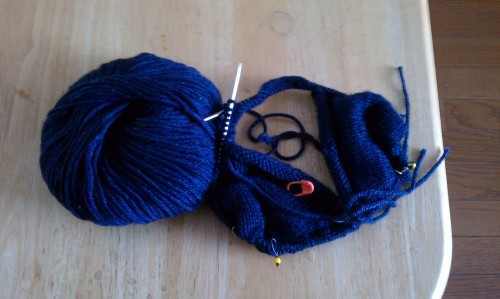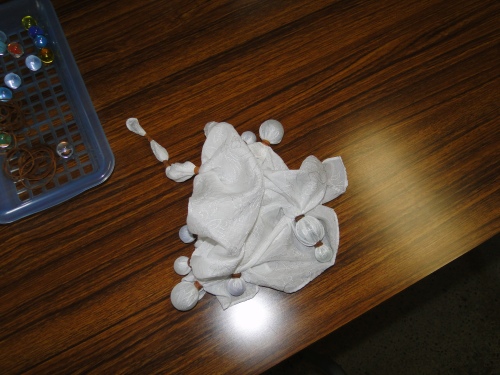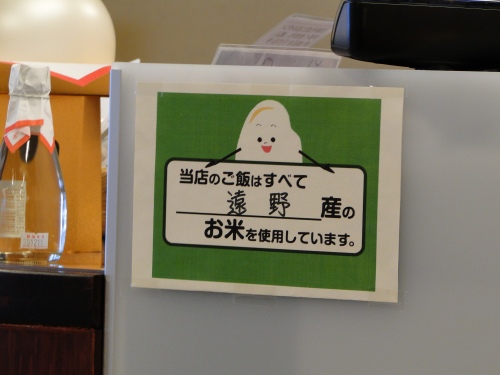And now, for the snowy part.
So much snow.
I kind of wanted to cop out of writing this post because all of my pictures are full of snow. Like, hey, check out this samurai house from the 1600s. You can kind of see it if you squint past the SNOW.

Eep.
Now, as you may have picked up from my previous posts, traveling to Tohoku in winter isn’t the best way to go about things. We had fun…we could have had more fun with less snow and more fellow tourists (that’s right, I wanted to be surrounded by MORE tourists). But in the end, we saw a lot of cool things and I’d do it again, especially since Hokkaido is so close to Tohoku and with school out, we had nothing better to do.
However. Kakunodate was a disappointment, especially compared to what we had hoped for. The guidebook had recommended it because it was full of old preserved samurai houses that you could poke around inside, some of them for free. This was confirmed by the map we got at the Morioka tourist information office – there were at least ten houses marked on it, all within easy walking distance of the station, most labelled as open to the public, with free admittance.

Sakamoto House (not open to the public)
How do I put it? The map let us down. Or, perhaps, somewhere it is written, ‘Visit Kakunodate, city of a million spring cherry blossoms, in January?! Are you MAD?!’
First, it snowed a lot. The scenery was beautiful, but you couldn’t look up because you’d constantly be blinking snowflakes out of your eyes. Sidewalks were covered, despite the best efforts of the townspeople (pretty much everyone we saw outside had a shovel in hand). Three foot piles of snow loomed from the rooftops.

Clearing snow from the roofs before it falls and buries some unsuspecting tourist.
Second, while only some of the houses on the map were indicated as only being open seasonally, in our experience, almost all of them were closed for the winter. The Nishinomiya House had its storeroom open to the public, which was nice, but the main house was closed until April. Oops. Other places had huge piles of snow in front of their front gates. One place seemed open, and had someone inside even, but they didn’t respond to our queries and we weren’t quite ready to pull a gaijin smash and go in anyway.

Nishinomiya House
Finally, we found one place that was open – one of the fee taking places, of course, the Aoyagi Samurai Manor Museum. They had quite the set-up, however. An armory full of old weapons, with a upstairs that carried more mundane items of daily life. The outbuildings were each filled with themed exhibits, one with art by Odano Naotake, one with military uniforms and items dating back to the 1800s, one with somebody’s old music collection, and a whole building filled with Western antiques. They even had a professionally translated information pamphlet in English, so you didn’t have to do a lot of guesswork.

Snowy street.
Winter struck again, however – nobody else was around and the area that was supposed to have artisans working with the local specialty, cherry bark, was empty. Alas.
We considered pushing on to the Ishiguro Samurai House, since it was another fee taking house and might have had a similar museum style set-up (and been open), but by that point, we were ready to cut our losses and hunt down lunch before heading up to Aomori for the final full day of our trip.

Kakunodate alley.
It was fun and worthwhile from an objective standpoint, I suppose. It would have been different if we’d had more accurate information. Then we could have headed directly to the fee taking houses, taken in the Denshokan museum, gone to the well stocked gift shop, and called it a great day. Instead, we stomped around cursing the map, expecting to see a bunch of cool houses and instead only seeing one.
Live and learn, I suppose.

Oh that looks safe.






















